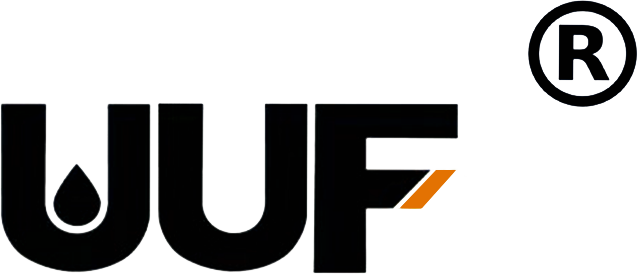How to Replace a Motorcycle Oil Seal: A Comprehensive, Step-by-Step Guide for Enthusiasts
Time:
2025-06-02
How to Replace a Motorcycle Oil Seal: A Comprehensive, Step-by-Step Guide Table of Contents Introduction to Motorcycle Oil Seals Importance of Oil Seals in Motorcycles Symptoms of a Faulty Oil Seal Tools and Materials Required for Replacement Step-by-Step Replacement Process Preparation Before Replacement Removing the Old Oil Seal I
How to Replace a Motorcycle Oil Seal: A Comprehensive, Step-by-Step Guide
Table of Contents
- Introduction to Motorcycle Oil Seals
- Importance of Oil Seals in Motorcycles
- Symptoms of a Faulty Oil Seal
- Tools and Materials Required for Replacement
- Step-by-Step Replacement Process
- Tips for a Successful Replacement
- Common Mistakes to Avoid
- Conclusion
- Frequently Asked Questions
Introduction to Motorcycle Oil Seals
Motorcycles are intricate machines that rely heavily on properly functioning components to ensure optimal performance. One such component is the oil seal, a critical part of the motorcycle's engine and transmission system. Oil seals are designed to prevent leakage of lubricants, which is essential for minimizing friction and wear on engine parts. Replacing a worn or damaged oil seal is crucial for maintaining your motorcycle's efficiency and longevity.
Importance of Oil Seals in Motorcycles
Oil seals serve several essential functions in a motorcycle:
1. **Prevent Fluid Leaks**: Oil seals create a barrier that prevents oil from leaking out of the engine or transmission, ensuring that lubrication remains intact.
2. **Protect Internal Components**: They help keep contaminants, such as dirt and moisture, out of critical engine parts, reducing the risk of corrosion and wear.
3. **Enhance Performance**: By maintaining the proper lubrication and preventing leaks, oil seals contribute to the overall performance and efficiency of the motorcycle.
4. **Prolong Engine Life**: A well-functioning oil seal helps protect the engine from damage caused by insufficient lubrication, ultimately extending its lifespan.
Symptoms of a Faulty Oil Seal
Recognizing the signs of a faulty oil seal is the first step toward timely replacement. Here are some common symptoms:
- **Oil Leaks**: The most apparent sign is the presence of oil puddles under the motorcycle. If you notice oil pooling, it's time to inspect the oil seals.
- **Low Oil Levels**: A significant drop in the oil level without visible leaks elsewhere can indicate oil seal failure.
- **Unusual Engine Noise**: An increase in engine noise may signal inadequate lubrication due to oil leaks.
- **Overheating**: Insufficient oil can lead to overheating, which can further damage the engine components.
- **Dirty or Contaminated Oil**: If the oil appears muddy or contaminated, the seals may be compromised, allowing dirt to enter the system.
Tools and Materials Required for Replacement
Before embarking on the replacement process, ensure you have the following tools and materials at hand:
- **Basic Tool Set**: Include wrenches, sockets, and screwdrivers suitable for your motorcycle model.
- **New Oil Seal**: Purchase the correct oil seal designed for your specific motorcycle make and model.
- **Seal Puller**: This tool makes it easier to remove old seals without damaging surrounding components.
- **Hammer and Drift**: For installing the new oil seal.
- **Cleaning Supplies**: Rags and degreasers to clean the area around the oil seal.
- **Lubricant**: Use oil or grease to lubricate the new seal and surrounding components during installation.
Step-by-Step Replacement Process
Replacing a motorcycle oil seal is a straightforward task that can be accomplished with some basic mechanical skills. Follow these steps for a successful replacement.
Preparation Before Replacement
1. **Safety First**: Before beginning any work on your motorcycle, ensure it is parked on a level surface. Use a motorcycle stand to keep it stable while you work.
2. **Drain the Oil**: To avoid spills, drain the oil from the engine or transmission. This step is crucial if the oil seal is located in areas where oil is present.
3. **Gather Your Tools**: Have all tools and materials within reach to streamline the process.
Removing the Old Oil Seal
1. **Locate the Oil Seal**: Identify the location of the oil seal on your motorcycle. Common locations include the crankshaft, countershaft, and fork seals.
2. **Use a Seal Puller**: Insert the seal puller under the old oil seal. Gently pry it out, taking care not to damage surrounding components.
3. **Clean the Area**: Once the old seal is removed, clean the area thoroughly using a degreaser and a rag. This step ensures that no debris interferes with the new seal installation.
Installing the New Oil Seal
1. **Prepare the New Seal**: Before installation, lightly lubricate the outer edge of the new seal with oil or grease. This lubrication helps it slide into place easily.
2. **Align the Seal**: Position the new oil seal at the installation point. Ensure that it is oriented correctly according to the manufacturer's specifications.
3. **Tap the Seal in Place**: Use a hammer and drift to gently tap the new seal into place. Ensure it sits evenly and flush with the surrounding surface.
4. **Reassemble Components**: If you had to remove any additional components to access the oil seal, reassemble them securely.
5. **Fill with Oil**: Once everything is reassembled, fill the engine or transmission with the appropriate oil as per the manufacturer's recommendations.
Tips for a Successful Replacement
- **Consult the Manual**: Always refer to your motorcycle's service manual for specific details related to your model.
- **Take Your Time**: Rushing through the process may result in mistakes. Take your time to ensure everything is done correctly.
- **Double-Check Seals**: Before reinstalling components, double-check the position and condition of the new oil seal.
- **Regular Maintenance**: Incorporate oil seal inspections into your regular maintenance routine to catch issues early.
Common Mistakes to Avoid
1. **Using the Wrong Seal**: Ensure you purchase the correct oil seal for your motorcycle. Using the wrong part can lead to further complications.
2. **Neglecting to Clean**: Failing to clean the area properly before installing the new seal can lead to premature failure of the seal.
3. **Over-tightening Fasteners**: When reassembling, avoid over-tightening any bolts, as this can damage components or cause leaks.
4. **Ignoring Symptoms**: If you notice signs of a faulty oil seal, address them promptly to prevent more significant issues down the line.
Conclusion
Replacing a motorcycle oil seal is an essential maintenance task that every motorcyclist should be familiar with. By following this comprehensive guide, you can ensure your motorcycle remains in optimal condition, preventing leaks and extending the life of your engine. With the right tools, a bit of patience, and the steps outlined here, you’ll be well on your way to successfully replacing an oil seal and maintaining your beloved machine.
Frequently Asked Questions
1. How often should I replace my motorcycle oil seals?
It is advisable to check oil seals regularly during maintenance and replace them whenever you notice leaks or signs of wear.
2. Can I replace an oil seal without professional help?
Yes, many motorcycle enthusiasts can replace oil seals without professional assistance, provided they follow the correct procedures.
3. What are the risks of not replacing a faulty oil seal?
Neglecting to replace a faulty oil seal can lead to oil leaks, engine damage, and ultimately costly repairs.
4. How do I know which oil seal to buy for my motorcycle?
Always refer to your motorcycle’s service manual or consult with a reputable dealer to identify the correct oil seal for your make and model.
5. Are there any specific tools needed for this task?
Basic hand tools, a seal puller, a hammer, and a new oil seal are typically required for replacement.
Keyword:
Motorcycle oil seal


















